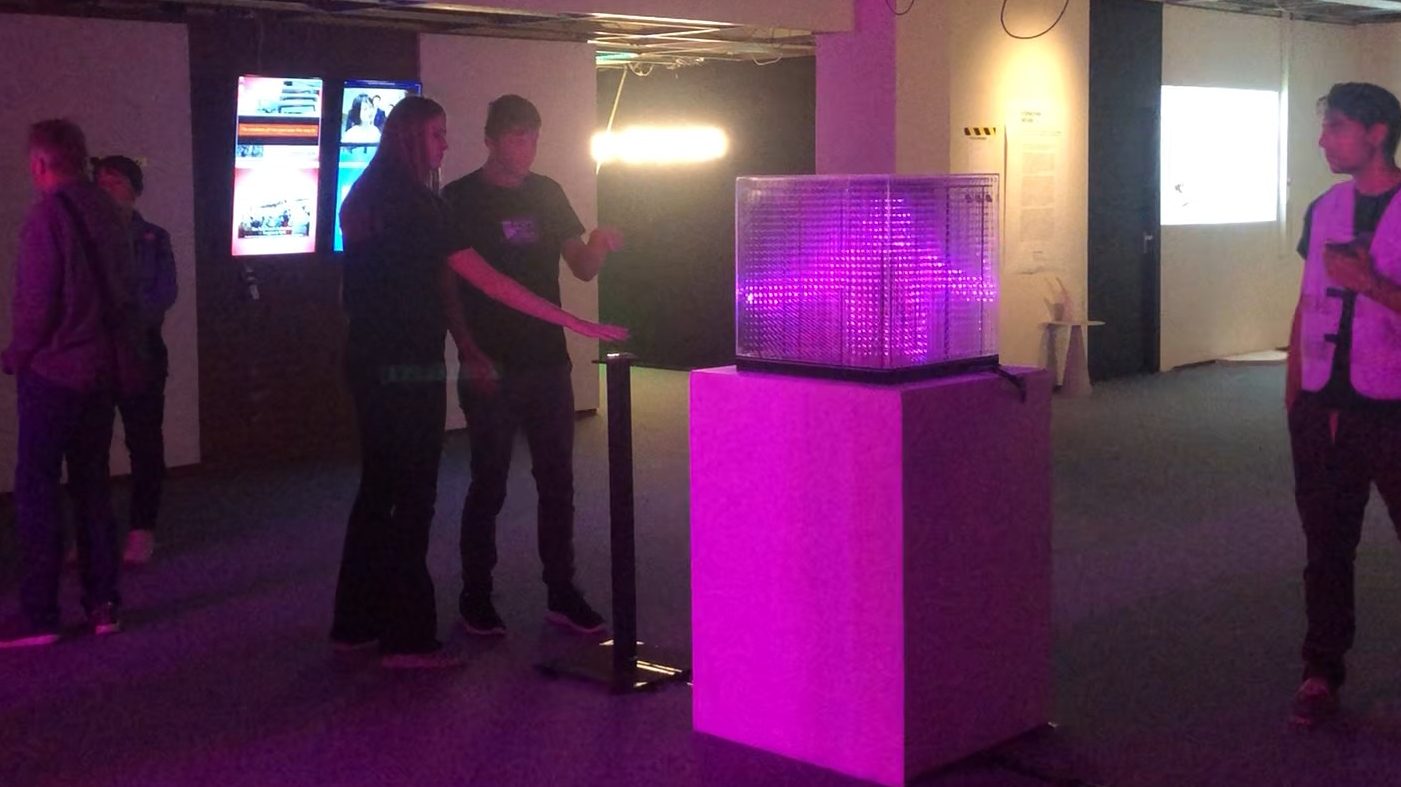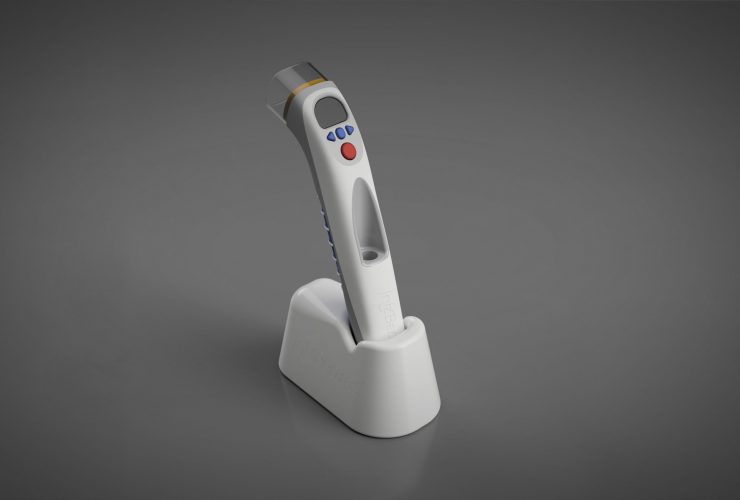The QuinCube is a full color LED cube (or volumetric display) with a resolution of 25 x 25 x 25 pixels.
The project started as a challenge for myself to build an LED cube that can display relatively complex 3D models, like faces, with a high enough resolution so that they can be distinguished from other models and be interacted with.

Combined with a Microsoft Kinect camera it can display real-time 3D scans of environments and people. The Kinect data is first transferred to Unity 3D by making use of the Kinect streamer and visualizer that are part of the openIMPRESS toolkit that I developed during my master thesis.
Then, the 3D scene is sliced up in 25 slices (the amount of layers of the QuinCube) with a custom render and the resulting image data is streamed to the QuinCube over a USB serial connection.
The QuinCube was exhibited at the GOGBOT 2020 festival.
By reading the skeleton tracking data provided by the Kinect I programmed the boundaries of the cube in the virtual scan to always focus and zoom in on the visitors passing by the cube.
I also added hand interaction using a LeapMotion controller, with which the visitors could manipulate (grab and stretch) the volumetric scan that was displayed in the QuinCube.
Various (smaller) prototypes have been built before building the QuinCube, in order to get familiar with building LED cubes.
One of the bigger challenges of this project was finding a way to control the large amount of LEDs that this cube would contain. Experience with previous LED heavy projects taught me that in order to maintain a smooth framerate, the maximum amount of LEDs that should be controlled with one Teensy microcontroller (which is my controller of choice) should be limited to around 4000. Therefore, in order to control the necessary (25 x 25 x 25 =) 15625 LEDs, I developed a dedicated controller, capable of controlling 128 channels of WS2811-type digital LEDs, specifically for this project.
I designed a custom “motherboard” PCB that is used to connect the 625 LED sticks to the controller.




